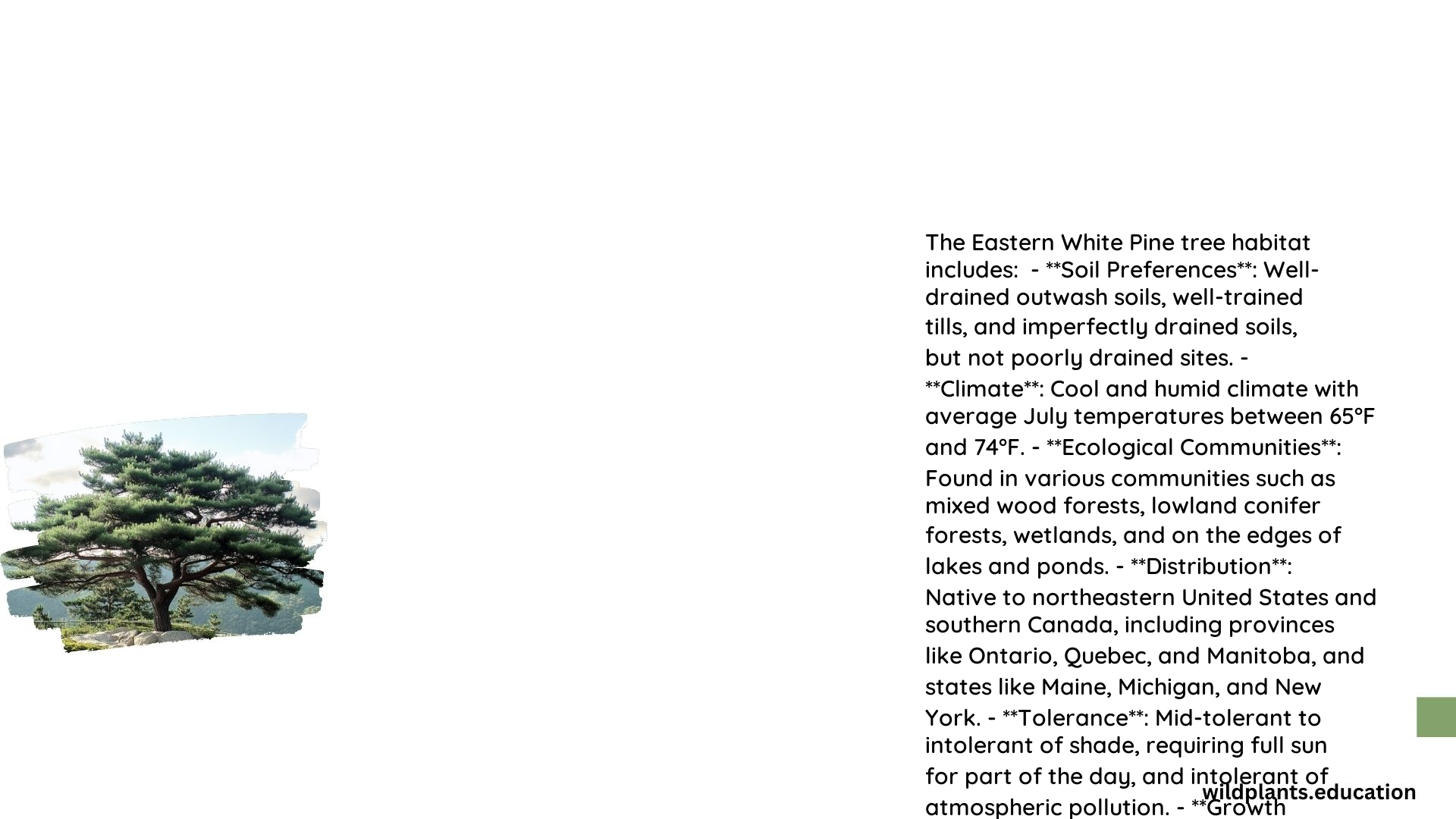The Eastern White Pine (Pinus strobus) is a majestic coniferous tree native to eastern North America. Its habitat requirements are crucial for its successful growth and thriving. This comprehensive guide delves into the essential elements that define the Eastern White Pine’s ideal living environment.
What are the Soil Requirements for Eastern White Pine Trees?

The Eastern White Pine tree thrives in slightly acidic soils with a pH range of 5.5 to 6.5. These trees prefer well-drained soils, such as sandy or loamy varieties, and avoid waterlogged conditions. Heavy clay soils should be avoided, as they can impede the tree’s growth. To maintain soil health and provide essential nutrients, the use of organic mulch, such as pine needles, is recommended.
| Soil Characteristic | Optimal Range |
|---|---|
| pH Level | 5.5 to 6.5 |
| Drainage | Well-drained |
| Soil Type | Sandy or loamy |
| Nutrient Content | Balanced, with organic mulch |
What Temperature Conditions are Ideal for Eastern White Pine Trees?

Eastern White Pine trees prefer cool temperatures, with optimal growth occurring between 35°F (2°C) and 75°F (24°C). While the trees can tolerate some seasonal variation, they may struggle in very hot climates, with temperatures exceeding 85°F (29°C). The trees thrive during the growing season when temperatures are cooler, and they can withstand the colder winter months.
| Temperature Range | Optimal Conditions |
|---|---|
| Optimal Growth | 35°F (2°C) to 75°F (24°C) |
| Critical Threshold | Below 85°F (29°C) |
| Seasonal Variations | Cooler temperatures during growing season |
How Tolerant are Eastern White Pine Trees to Pollution?
Eastern White Pine trees are susceptible to certain pollutants, such as sulfur dioxide and ozone, which can negatively impact their health and growth. Exposure to these pollutants can lead to reduced growth, yellowing needles, and increased susceptibility to disease. Studies have shown that Eastern White Pine trees in urban areas can be affected by pollution, highlighting the importance of maintaining a clean environment for their optimal development.
What Other Factors Influence the Habitat of Eastern White Pine Trees?
In addition to soil and temperature requirements, Eastern White Pine trees have other habitat preferences:
- Light Requirements: These trees prefer full sun to partial shade, requiring at least four hours of direct sunlight per day for optimal growth.
- Watering: Eastern White Pine trees require consistent moisture, especially when young. Established trees can tolerate some drought but benefit from regular watering.
- Fertilization: Feeding the trees with a high-acid fertilizer in the spring, following the fertilizer label instructions, can help maintain their health and vigor.
